Nikon F-Mount Lens & Camera Compatibility
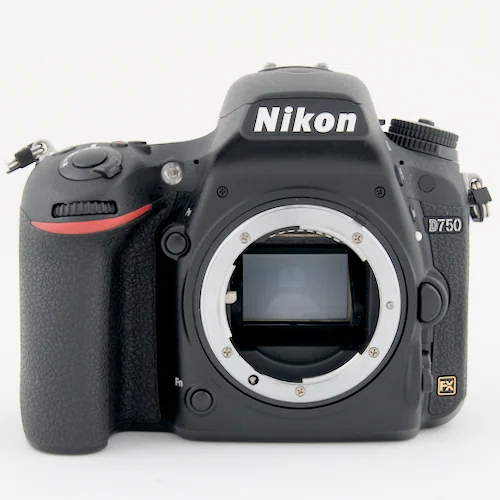
The first Nikon F-mount camera was the Nikon F, released in 1959. It was a 35mm film SLR.
Over time, autofocus and electrical contacts have been added to the mount. These features can affect forward and backward lens compatibility. Generally, lenses can be used across a wide variety of camera bodies, but all features are not guaranteed to work.
A notable exception are Non-Ai lenses, as they can cause damage to cameras not specifically designed to use them. They are older manual focus lenses.
Damage Caused by Nikkor Non-Ai Lenses
So called “Non-Ai” lenses are the the oldest Nikon F-Mount lenses. They will damage Nikon DSLRs and SLRs made after 1977 if they are mounted onto a camera.
Non-Ai lenses can be identified by metering prongs and a solid lip that protrudes backward from the lens mount. The lip will press against the meter coupling ridge or EE servo coupling post. The pressure can break or bend those parts, causing damage.
Nikon Lens Abbreviations
There are many abbreviations that can appear on the barrel of a Nikon F-mount lens. The ones most commonly seen on modern Nikon lenses are below.
- AF: Auto Focus. This indicates that the lens is capable of automatically focusing on a subject.
- AF-S: Auto Focus-Silent Wave Motor. These lenses have a built-in autofocus motor, enabling faster and quieter autofocus operation.
- AF-P: Auto Focus-Pulse Motor (also known as stepping motor). These lenses provide faster, smoother, and quieter autofocus, especially beneficial when recording video.
- AF-D: Auto Focus-Distance Information. These lenses relay distance information to compatible Nikon cameras for more accurate metering and flash exposure.
- AI: Automatic Indexing. This technology allows the lens to mechanically relay aperture information to the camera body.
- AI-S: Automatic Indexing-Shutter. This is an updated version of AI lenses with added features for improved compatibility with newer cameras.
- DX: These lenses are specifically designed for Nikon’s APS-C sensor cameras. They’re smaller and lighter, but won’t provide full frame coverage on FX cameras.
- FX: These lenses are designed to cover the larger full frame (35mm equivalent) sensor. They can be used on both FX and DX cameras, but on DX cameras they’ll have a 1.5x crop factor.
- ED: Extra-Low Dispersion glass. This type of glass minimizes chromatic aberration, providing sharper images with less color fringing.
- G: G-type lenses lack an aperture ring, with aperture settings managed through the camera body.
- D: D-type lenses relay the distance to the subject to the camera, useful for flash metering.
- VR: Vibration Reduction. This is Nikon’s optical image stabilization technology, reducing blur caused by camera shake.
- IF: Internal Focusing. The lens doesn’t change size during focusing, offering more balanced handling.
- E: Electromagnetic diaphragm. This mechanism provides highly accurate control of the lens’s aperture for consistent exposures during continuous shooting.
- SWM: Silent Wave Motor. This denotes lenses using the Silent Wave Motor technology for quieter autofocus operation.
- N: Nano Crystal Coat. This is a lens coating that reduces ghosting and flare.
- PC - Perspective Control. Nikkor lenses that have tilt and shift movement built-into the lens. None have AF, but there are a couple Micro-Nikkor versions for macro photography.
- PF: Phase Fresnel. A type of lens design that can reduce the size and weight of telephoto lenses.
- Z: These lenses are designed for Nikon’s mirrorless camera systems.
Are all Nikon Mounts the Same?
No. There are 4 different Nikon lens mounts, which are listed below. This page is focused on the differences between F-mount lenses.
- Nikon S mount – The first mount made by Nikon. Used on rangefinder cameras. (Discontinued)
- Nikon F mount – Used on SLRs and DSLRs.
- Nikon CX mount – Designed for the Nikon 1 series cameras. These are very small lenses. (2011-2018)
- Nikon Z mount – Introduced in 2018. For use on APS-C and full frame mirrorless cameras.
What are the Differences Between F-Mount Lenses?
There are several differences that affect lens compatibility. With the exception of Non-Ai lenses, lenses will work on newer camera bodies. Metering and autofocus may not work depending on the camera body.
Lenses are backward compatible with the exception of the G series and any other lenses that have electronically controlled apertures.
Non-Ai
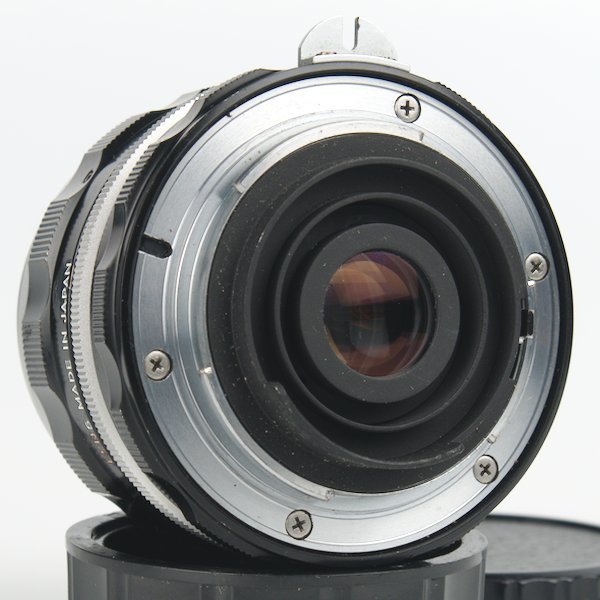
Non-Ai lenses have metering prongs which stick out from the barrel of the lens. They have automatic aperture control.
These are lenses made between 1959-1977ish. They will have meter coupling prongs sticking out from the aperture ring. There is a solid lip on the lens mount that will damage a camera’s EE servo coupling prong or meter coupling ridge.
They are easy to visually identify if you can see the mount. Online sellers will state the lens is “Non-Ai.” Sellers on eBay might not do this is they are unfamiliar with Nikkor lenses.
Non-Ai lenses can be converted to work on newer camera bodies. Converted lenses are often referred to as being Ai’d. The conversion requires slots cut to match those of a Ai lens.
This can be done by removing the aperture ring on a lens and cutting it with a Dremel. I made a couple of YouTube videos covering the process which can be viewed here.
These lenses do not require a conversion to be adapted to a mirrorless camera. I use a Novoflex adapter to use some of the rarer lenses I have on a Sony A7.
Ai & Ai-S
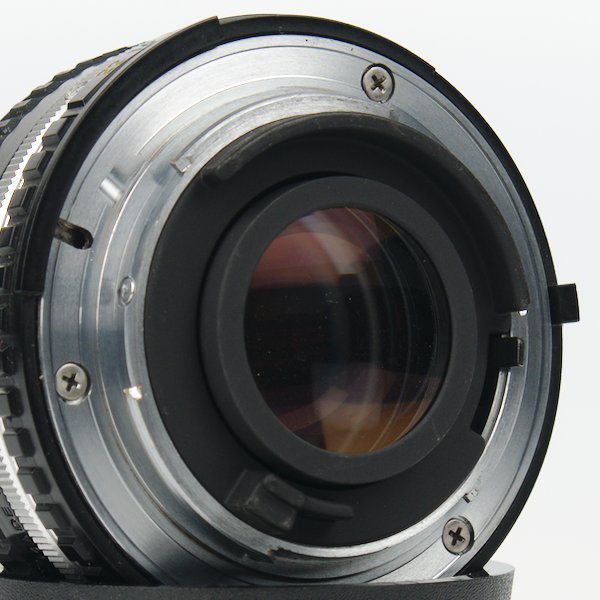
Ai mount lens. Notches on the outside of the lens are for the meter coupling ridge. Nikon Ai-S lenses have improved compatibility.
These lenses are great to use on Nikon’s film SLRs, like the Nikon FM2.
A notch on Ai and Ai-S lenses connects to the meter coupling ridge on a camera. The connection supplies the camera with metering information. Newer DX digital cameras do not have a meter coupling ridge.
Ai and Ai-S lenses can be used on cameras without a meter coupling ridge. Metering information will not be provided to the camera. In order to use these lenses, the camera will have to be operated in manual mode. A light meter or trial and error will be required to get a correct exposure in the lens is stopped down.
If your camera does not have a meter coupling ridge and you are unfamiliar with manual mode, avoid these lenses. Not being able to use the light meter built into your camera is going to cause taking images to take a much longer amount of time.
Early Nikon AF & D-Series
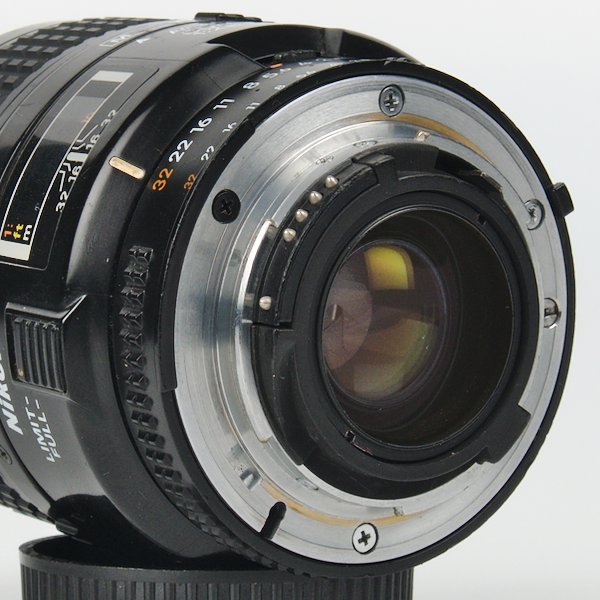
Autofocus will not work on any camera body that does not have a built in screw drive motor. Lenses can still be manually focused.
The autofocus on early AF and D-series lenses is controlled by a mechanical linkage. The connection point can be seen on the rear mount of the lens.
Current lenses have motors built inside of them. Many DX camera bodies and the F-mount to Z-mount adapter do not have screw drive motors built into them.
The changes also extend to the optical designs of the entire lineup of Nikon F-mount lenses. This coincides with the increased power of computer aided optical design.
Manually focusing AF and D-series lenses is an unpleasant experience. 180 degrees or more of rotation is present in most manual focus only lenses. D-series lenses have shorter focus throws, which makes focusing more difficult.
The entire focus linkage moves when manually focusing, which I do not find to be a pleasant feeling. I would not recommend D-series lenses for manual focusing.
These lenses have CPU contacts toward the top of the mount in addition to a meter coupling ridge. The aperture can be locked and controlled electronically, which enables shutter priority mode.
To lock a lens, the aperture will need to be set to the smallest aperture, which will be printed in orange. Backward compatibility to cameras without CPU contacts is maintained by the meter coupling ridge.
Nikon AF-S Lenses
The “AF-S” label stands for Auto Focus-Silent Wave Motor. This Silent Wave Motor (SWM) technology enables lenses to focus quickly, smoothly, and quietly, making these lenses particularly suitable for shooting video as well as still images where quiet operation is important.
AF-S lenses are also recognized for their compatibility across a broad range of Nikon cameras. They are designed to work with some Nikon SLR (Single Lens Reflex) and all DSLR (Digital Single Lens Reflex) cameras. A lens that is an example of this would be the Nikon AF-S Nikkor 50mm f/1.8G or Nikon AF-S DX 35mm f/1.8G.
Nikon AF-P Lenses
Nikon AF-P lenses, where “AF-P” stands for Auto Focus-Pulse Motor, are another category of Nikon’s lens offerings. AF-P lenses use a stepping motor technology that provides fast, quiet, and smooth autofocus operation. The Pulse Motor (stepping motor) is particularly effective when recording video, resulting in silent and smooth transitions as the focus shifts from one subject to another.
Compatibility of AF-P lenses with Nikon camera bodies is more specific compared to AF-S lenses. While they can be used with a variety of Nikon DSLRs, not all models will fully support their functionality. On some older camera bodies, AF-P lenses may not autofocus and the camera’s aperture controls may not function. For the best compatibility, Nikon recommends using AF-P lenses with camera bodies that are from 2013 or later.
To ensure the compatibility of an AF-P lens with a specific Nikon camera body, it’s essential to keep the camera firmware updated. Nikon provides regular firmware updates that often increase the compatibility of their camera bodies with their newest lens offerings, such as the Nikon AF-P DX 18-55mm f/3.5-5.6G.
| Nikon Camera Series | AF-P Compatibility |
|---|---|
| D3xxx Series | Fully compatible with the latest models, D3400 and later. Earlier models may have restrictions or not support AF-P lenses. |
| D5xxx Series | Fully compatible with the latest models, D5600 and later. Earlier models may have restrictions or not support AF-P lenses. |
| D500 | Fully compatible. |
| D600/D610 | Fully compatible after firmware update. |
| D750 | Fully compatible after firmware update. |
| D780 | Fully compatible. |
| D800/D800E/D810 | Compatible after firmware update, but some restrictions apply. |
| D4/D4S/D5 | Compatible after firmware update, but some restrictions apply. |
| Df | Not compatible. |
G-Series & E-Series (Electronically Controlled Apertures)
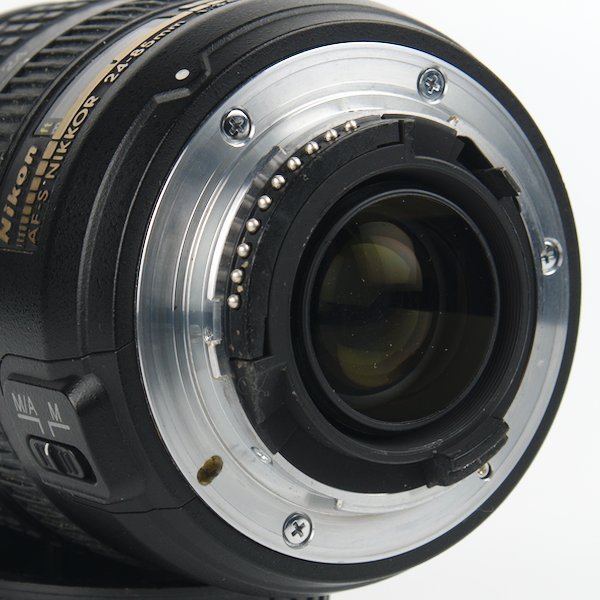
G Series lenses have electronically controlled apertures. There is not physical aperture ring, which limits backwards compatibility.
Cameras must have CPU contacts to use G and E lenses. All F-mount DSLRs have CPU contacts and will work with these lenses.
This is because of Nikon’s decision to remove physical apertures from these and future Nikon lenses. At the time of the change, some photographers were upset because lenses would not be compatible with older cameras.
Compatibility issues exist with olders Nikon SLRs, reversing lenses, and adapting to non Nikon Z-mount camera bodies.
Nikkor (Top Quality)
The Nikkor moniker is used on lenses that are made to Nikon’s highest standard. That does not mean that the Nikon F-mount lenses lacking the Nikkor designation are bad.
For example, some of the most popular F-mount lenses are the Series E lenses, especially the Nikon 50mm f/1.8 Series E lens.
Pronea IX Nikkor
IX Nikkor lenses were designed to work with the Pronea S and Pronea 6i 35mm APS film cameras. While they have a Nikon F-mount, do not attempt to use them on F-mount SLRs or DSLRs. The rear elements of these lenses protrude far enough back to get hit by an SLR or DSLR mirror.
Which Nikon Cameras are F-mount?
F-Mount DSLR Cameras
DX Crop Sensor Cameras with a Nikon F-mount:
| D3500 | D7500 | D70 |
| D3400 | D7200 | D60 |
| D3300 | D7100 | D50 |
| D3200 | D7000 | D40X |
| D3100 | D300S | D40 |
| D3000 | D300 | D2HS |
| D5600 | D500 | D2X |
| D5500 | D200 | D2H |
| D5300 | D100 | D1H |
| D5200 | D90 | D1X |
| D5100 | D80 | D1 |
| D5000 | D70S |
FX Full Frame Cameras with a Nikon F-mount:
| D5 | D850 | D750 |
| D4S | D810A | D700 |
| D4 | D810 | Df |
| D3X | D800E | D610 |
| D3 | D800 | D600 |
| D780 | D6 |
Nikon SLR 35mm Film Cameras
North American market model names appear in parenthesis.
Manual Focus 35mm Film SLRs:
| Nikon F | Nikon FE10 | Nikon F90X (N90S) |
| Nikon F2 | Nikon EM | Nikon F80 (N80) |
| Nikon F3 | Nikon FG | Nikon F100 |
| Nikkorex | Nikon FG-20 | Nikon F-601 (N6006) |
| Nikkormat F | Nikon F-301 (N2000) | Nikon F70 (N70) |
| Nikon FM | Autofocus 35mm Film SLRs: | Nikon F75 (N75) |
| Nikon FM2 | Nikon F3AF | Nikon F-401 (N4004) |
| Nikon FM10 | Nikon F4 | Nikon F-401S (N4004S) |
| Nikon FM3A | Nikonos RS | Nikon F-401X (N5005) |
| Nikkormat EL | Nikon F5 | Nikon F50 (N50) |
| NIkon EL2 | Nikon F6 | Nikon F60 (N60) |
| Nikon FE | Nikon F-501 (N2020) | Nikon F65 (N65) |
| Nikon FE2 | Nikon F-801 (N8008) | Nikon F55 (N55) |
| Nikon FA | Nikon F-801S (N8008S) | |
| Nikon F-601M (N6000) | Nikon F90 (N90) |
What is a DX Lens?
DX lenses have image circles that will cover an APS-C sensor. They are intended for use with DX camera bodies. The focal length of these lenses will be stated in what the equivalent focal length would be for a full frame lens.
What is the difference between DX and FX cameras?
Sensor size. DX (APS-C) cameras have sensors that are 24x16mm. FX, “full frame,” cameras have 36x24mm sensors.
Full frame cameras are called that because FX sensors are the same size as 35mm film.
Can you use a DX lens on an FX body?
Yes. FX bodies have an option to crop to fit a DX image circle. Some cameras have the option to automatically crop when a DX lens is attached. Cropping reduces the number of megapixels because the entire sensor is not used. Photos will have ~53% less megapixels.
You can also choose not to crop a DX lens. Using a telephoto lens will likely result in a circular image. This is because the image circle projected by the lens is not large enough to cover the sensor. Wider lenses will cover more of the sensor, but there will still likely be black corners and/or heavy vignetting.
As an example, a D750 is a 24.3mp camera. Without any cropping, files are 6032x4032 pixels. Using the D750 with a DX lens in crop mode, files are 3968x2640 pixels.
3968 x 2640 = 10,475,520 (10.48 megapixels)
Can you use an FX lens on a DX body?
Yes. DX cameras will capture the image from the center of an FX lens. Vintage lenses tend to have softer corners and vignetting. The DX “crop” will not include the corners, so sharper images with lens vignetting can be taken with vintage lenses.
The image taken by a DX camera will be from the center part of an FX lens. This is the sharpest image area of a lens. Older lenses tend to have softer corners and vignetting.
There will be a narrower field of view when using an FX lens on a DX body compared to an FX body. This is referred to as crop factor. With Nikon there is a 1.5x crop factor. Multiplying the focal length of an FX lens by 1.5 will give you the equivalent FX field of view.
A 100mm FX lens on a DX body would be the equivalent of using a 150mm lens on an FX body.
100mm x 1.5 = 150mm
This effect can be thought of as a “free” teleconverter. For wildlife, sports, and macro photography, DX bodies and FX lenses can be a preferred combination.